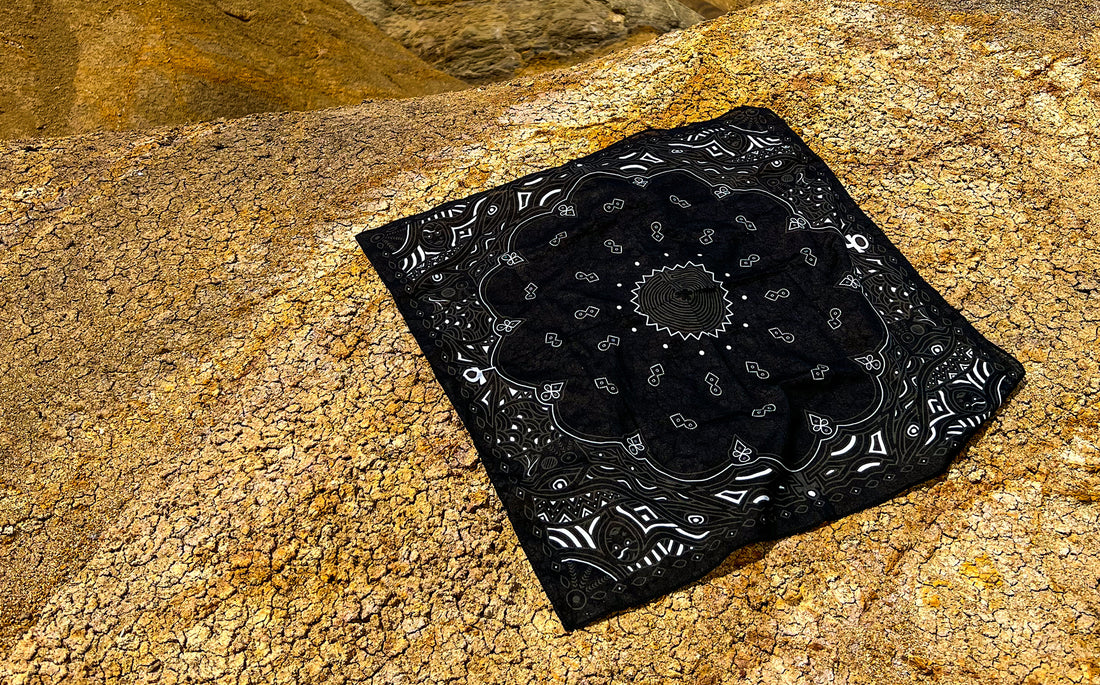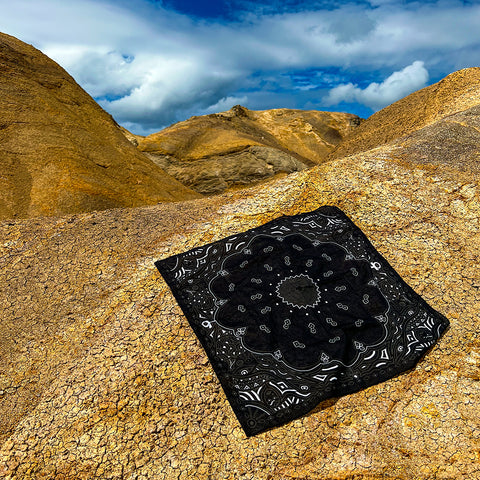Axl Rose and Rosie the Riveter proudly adorned bandanas, cementing their reputation as fashion accessories that stand the test of time.
Embark on a captivating exploration with us as we delve into the intriguing history and origins of this remarkable fashion staple!
Have you ever wondered about the fascinating origins of the timeless paisley pattern, a beloved staple in our lives?
Only a select few fashion trends have the ability to withstand the relentless march of time. Coco Chanel's iconic little black dresses and essential items like pants and shoes have undergone various transformations over the years, yet they continue to thrive as enduring classics that are worn day in and day out.
On the other hand, the bandanna has remarkably maintained its original form for centuries, standing as a testament to its timeless appeal.
For over three centuries, this humble accessory has stood the test of time, remaining a constant and beloved presence in the wardrobes of men and women alike.
ORIGIN OF THE BANDANA
The very first modern bandana made its debut in the United States during the historic period of the American Revolution in 1780. This groundbreaking accessory is credited to the talented designer named John Hewson.
THE BANDANA : FROM INDIA TO AMERICA
1. COWBOYS
Red bandanas have formed a strong connection with the United States, thanks to their prominent appearance in classic western movies, where cowboys proudly wore them as a symbol of their ruggedness and resilience. In more recent times, the legendary musician Bruce Springsteen adopted red bandannas as iconic fashion accessories during his electrifying tours, further solidifying their association with American culture and rock 'n' roll.
While often associated with the American way of life and the Wild West, bandannas have an origin that reaches far beyond those realms. The word "bandana" finds its roots in the Sanskrit term “Bandhana” or "Badhnati," which means "to bind" and refers to a traditional method of dyeing fabrics.
This linguistic link unveils an intriguing cross-cultural history of bandanas, illustrating how they have transcended geographical boundaries and transformed into the cherished accessories we embrace today. From their humble beginnings to their global popularity, bandannas serve as a testament to the enduring appeal of this versatile and timeless fashion statement.
Back in those days, producing vibrant colored fabrics was quite a challenge. In order to achieve the signature red shade of bandannas, manufacturers would immerse the fabric in a blend of fish oil, sheep dung, red madder roots, and a special mixture called "intestinal liquor."
2. PAISLEY PATTERN

The captivating print adorning bandannas has a fascinating origin in Persia. Referred to as the "paisley pattern," this design showcases teardrop shapes that represent the delicate dew of plants, combined with an intricate depiction of a cypress tree. In the Zoroastrian religion, the cypress tree holds deep significance as a symbol of everlasting life and eternity.
The paisley shape holds symbolic meaning in Hindu culture, representing fertility and embodying the concept of yin and yang. It has been deeply rooted in the traditions of South Asian and Iranian cultures, carrying immense cultural significance.
But how did this pattern become widely embraced worldwide? The credit goes to the East India Company, whose influence played a pivotal role in popularizing the paisley design beyond its place of origin.
3. THE BANDANA ARRIVED IN EUROPE
Prior to the 18th century, bandannas held significance as accessories within Asian cultures. It was through the trade routes established by the British, particularly the renowned "Silk Road", that these colorful adornments made their way into the hands of European consumers.
As their popularity surged in Europe, local fashion enthusiasts even coined the term "bandannoes" to refer to these stylish fashion accessories. From that pivotal moment onward, bandanas embarked on a remarkable journey, transcending borders and cultures to become an enduring fashion staple cherished by people around the world.
CONCLUSION
Bandanas have transcended various subcultures throughout history, spanning from cowboys and biker gangs to 60s hippies and beyond. What remains undeniable is their timeless appeal as a fashion statement that never loses its charm.
In today's era, there are countless ways to stylishly wear a bandana. Many women, for example, incorporate it into their attire, whether it's adorning their heads, necks, wrists, or even using it as a fashionable accessory for their bags.
Now that you possess a wealth of knowledge about bandannas, the next step is to acquire a trendy and top-quality one. At our store, Kamdana (African Bandana), you'll discover an extensive selection that caters to your preferences and needs.
Should you require any further information or assistance, feel free to contact us.






